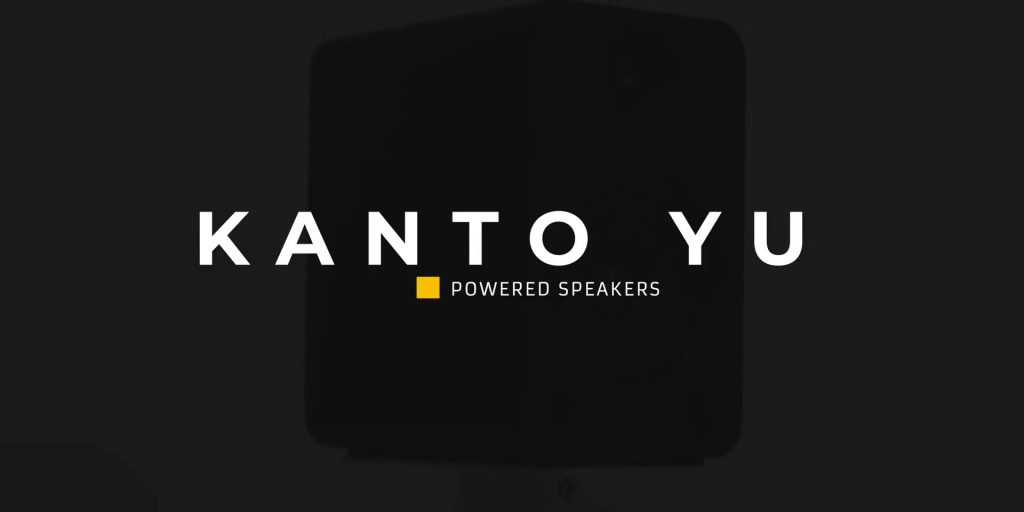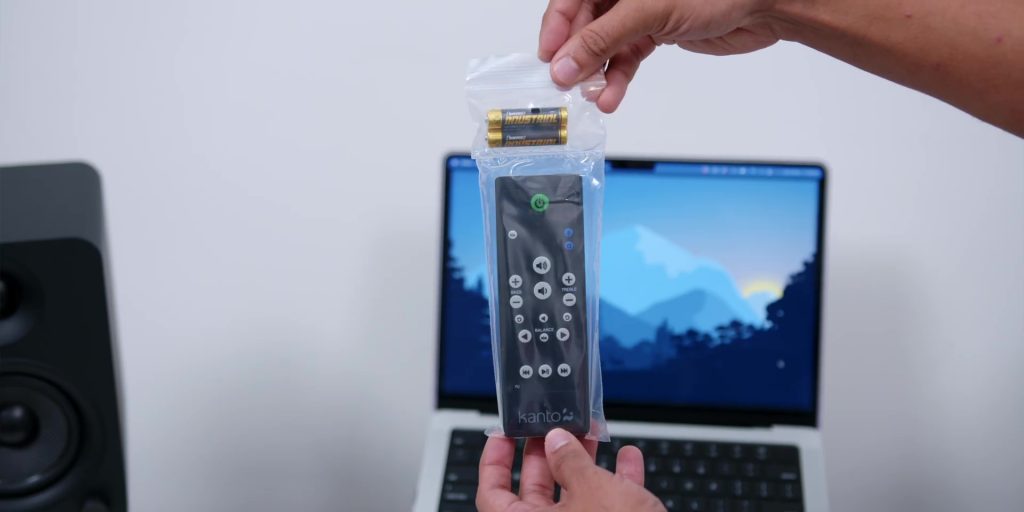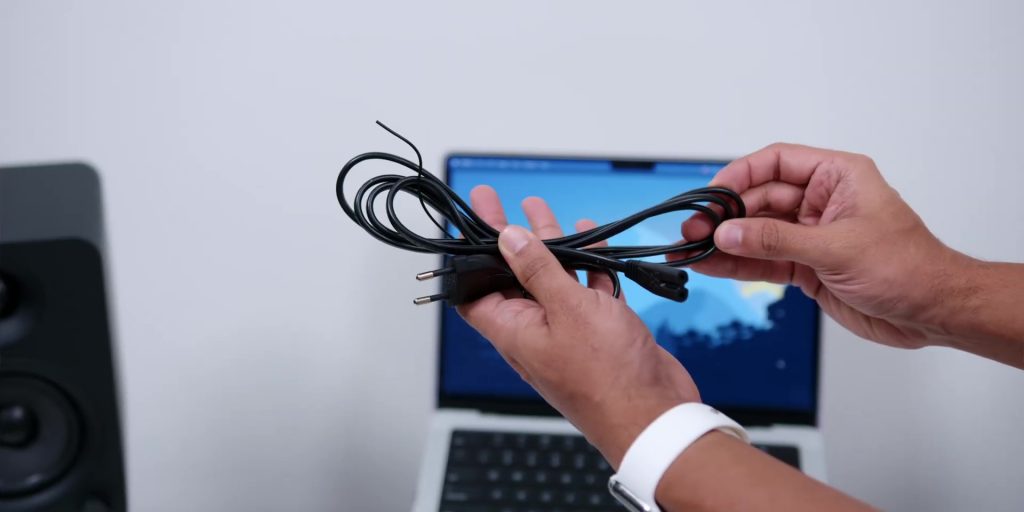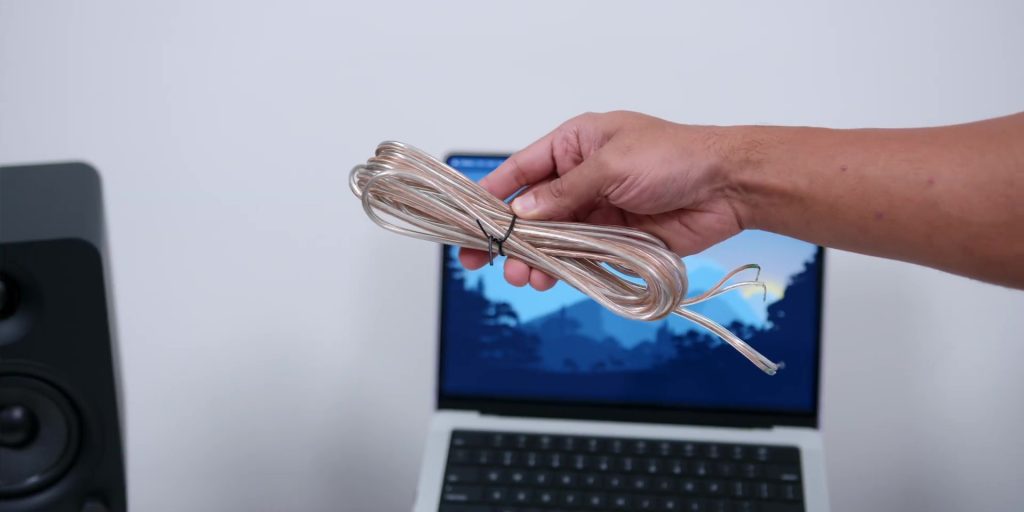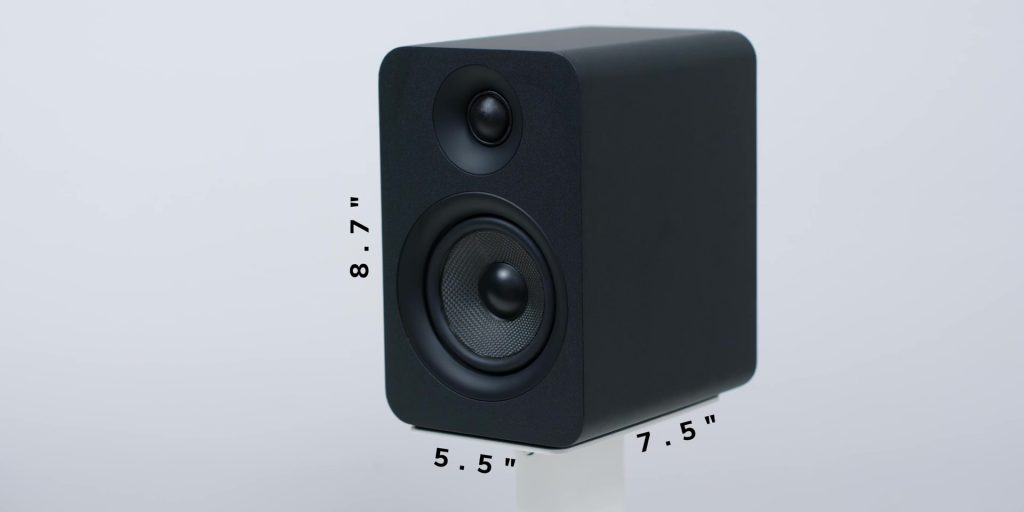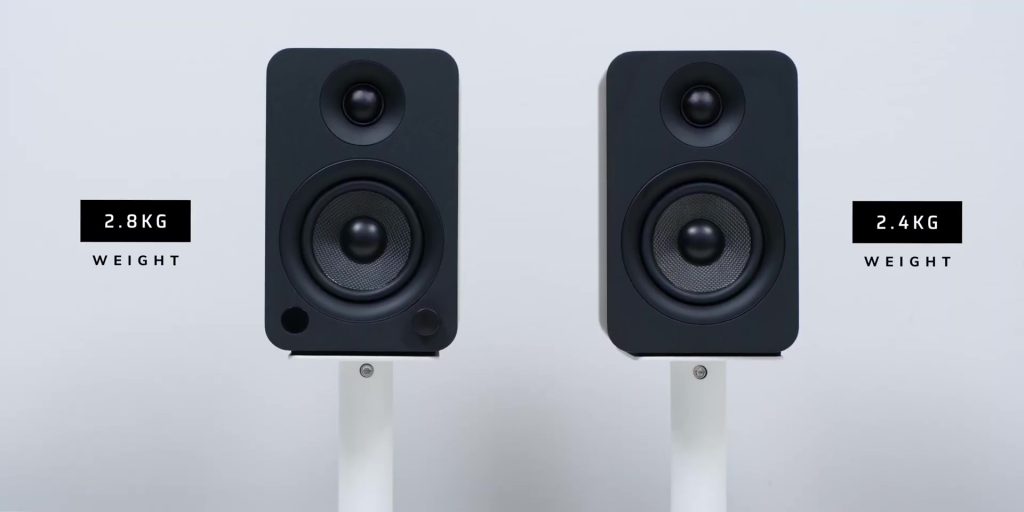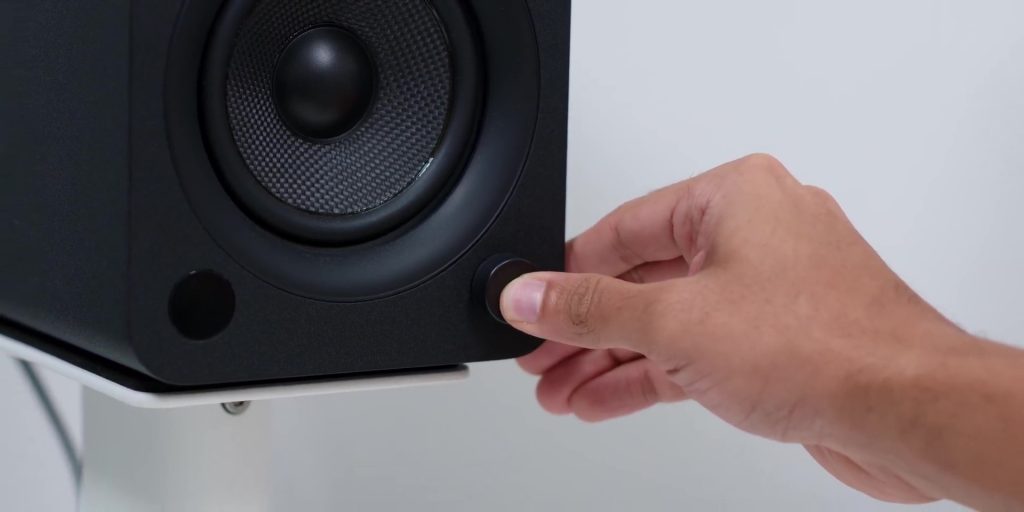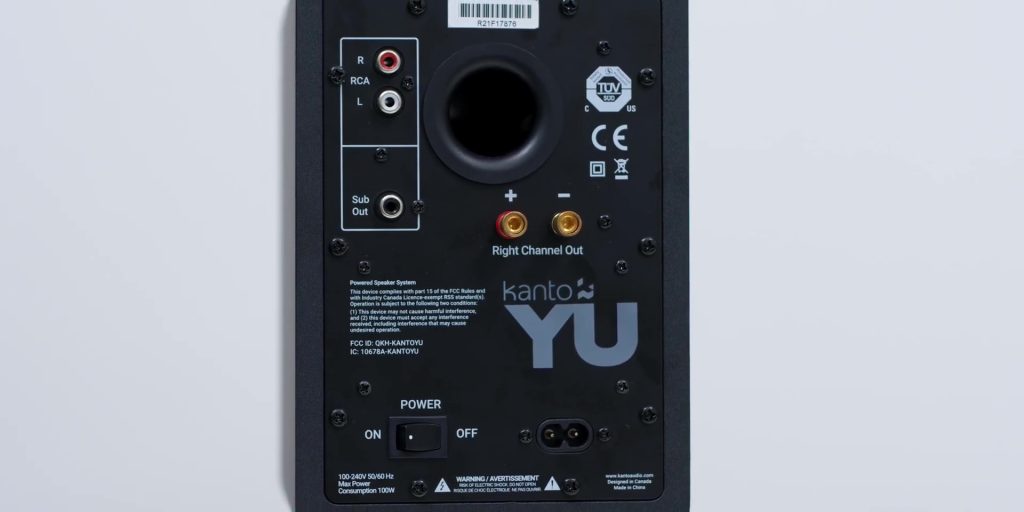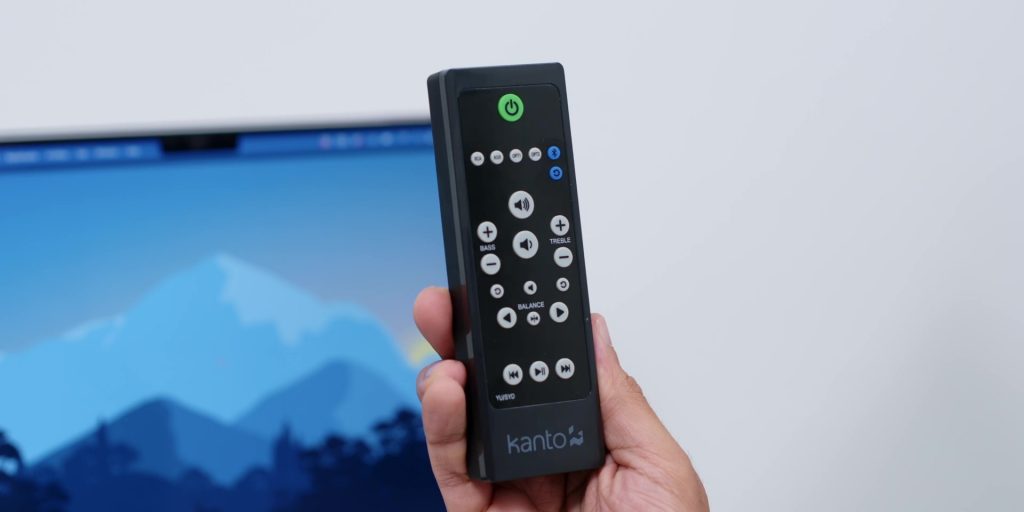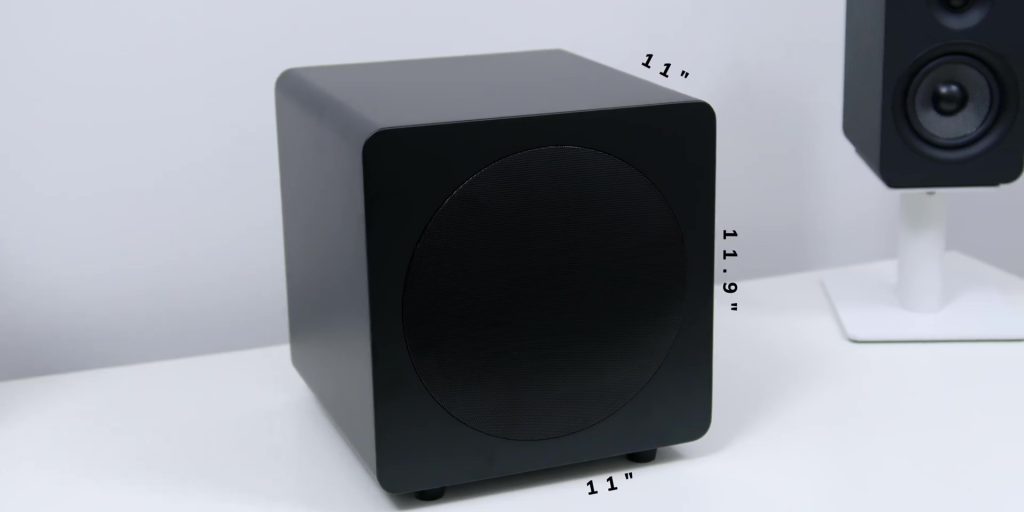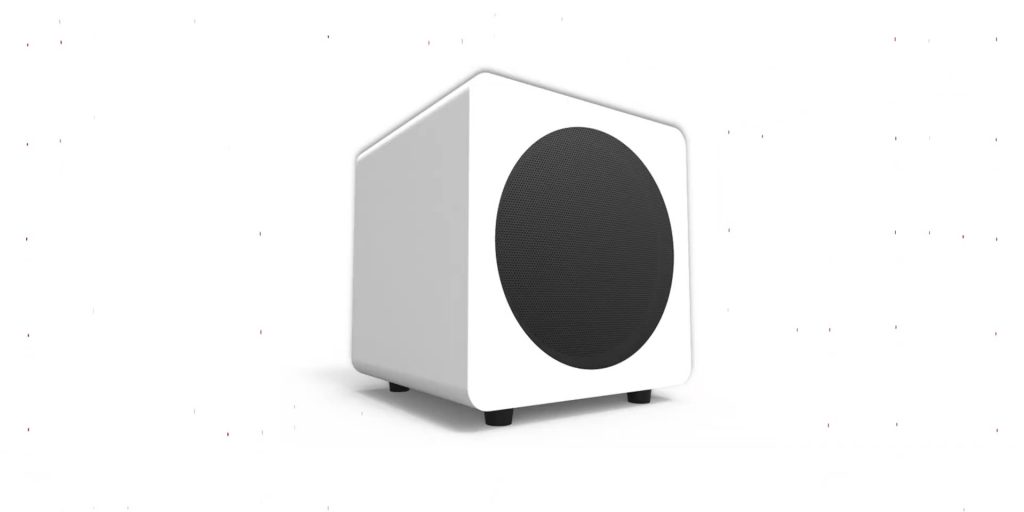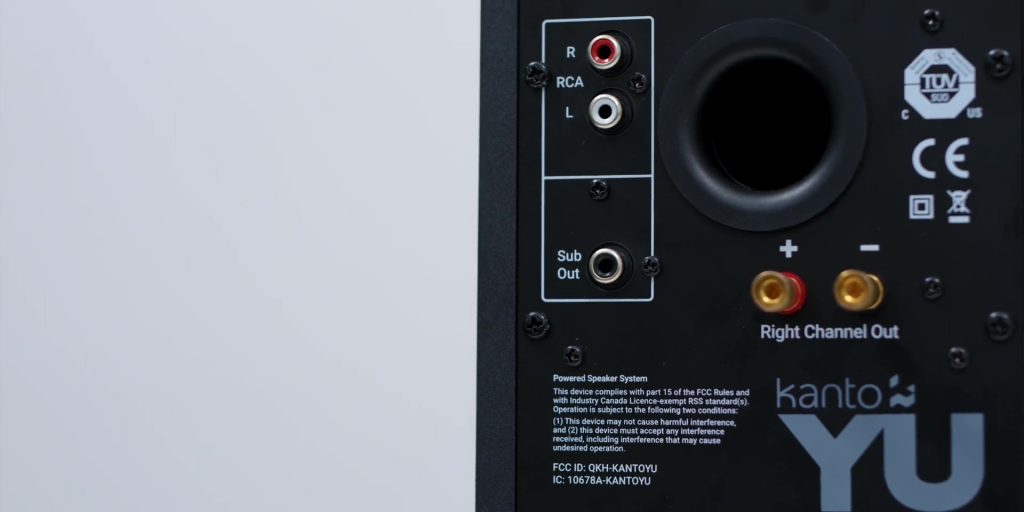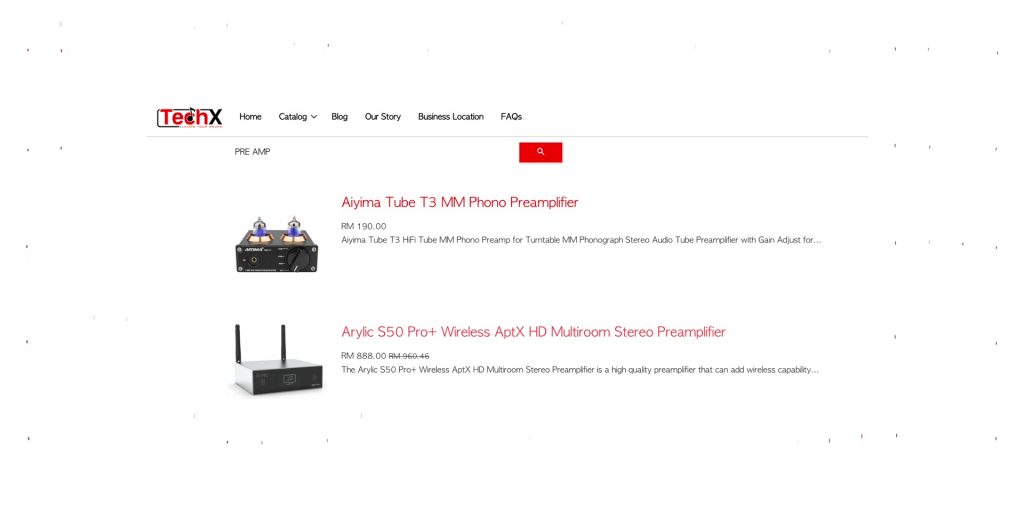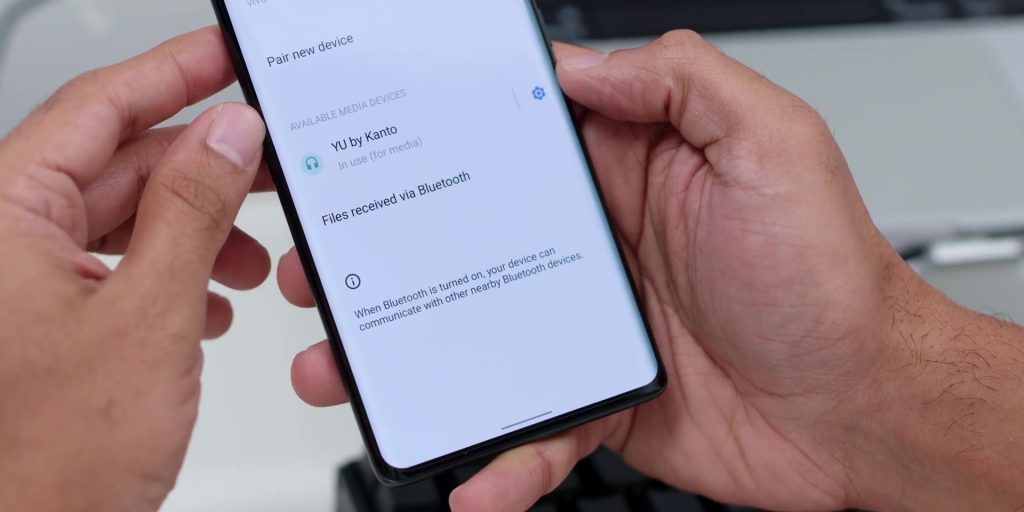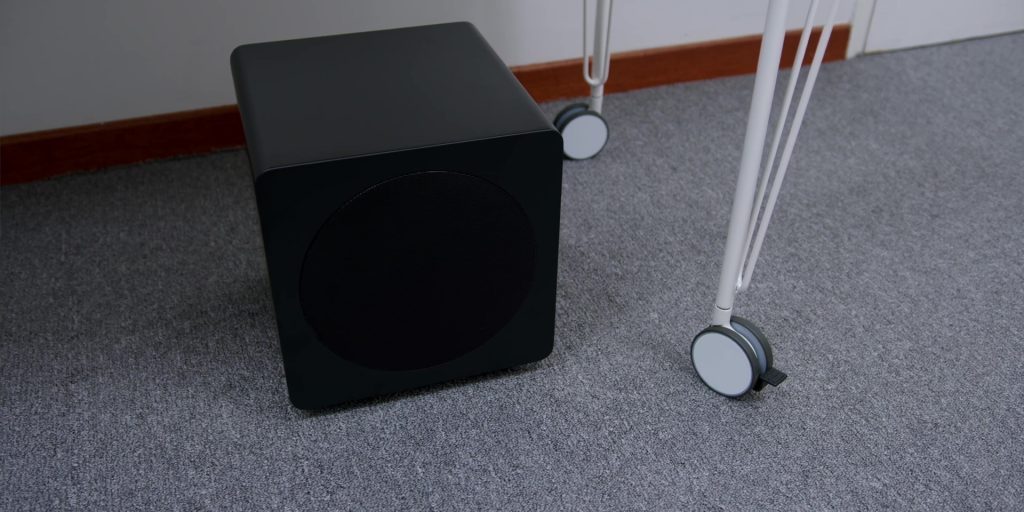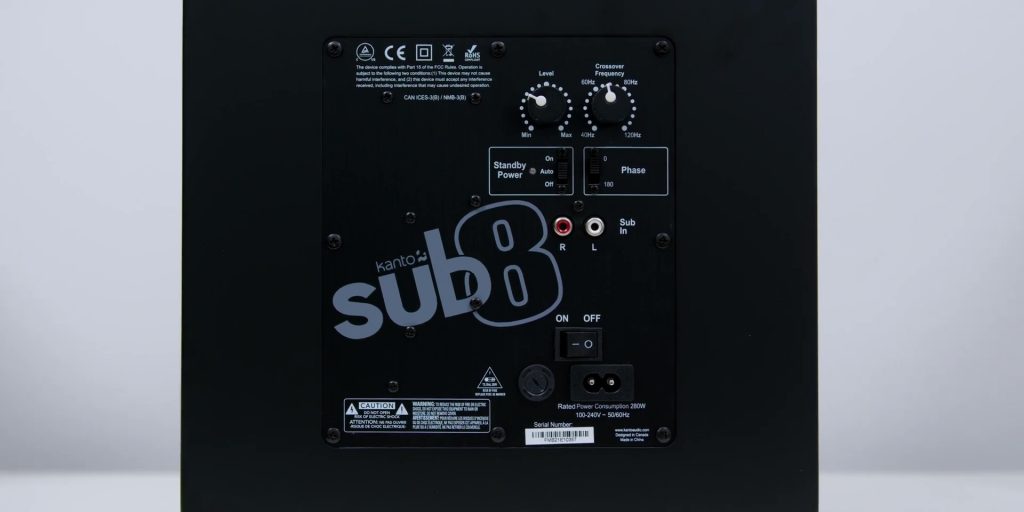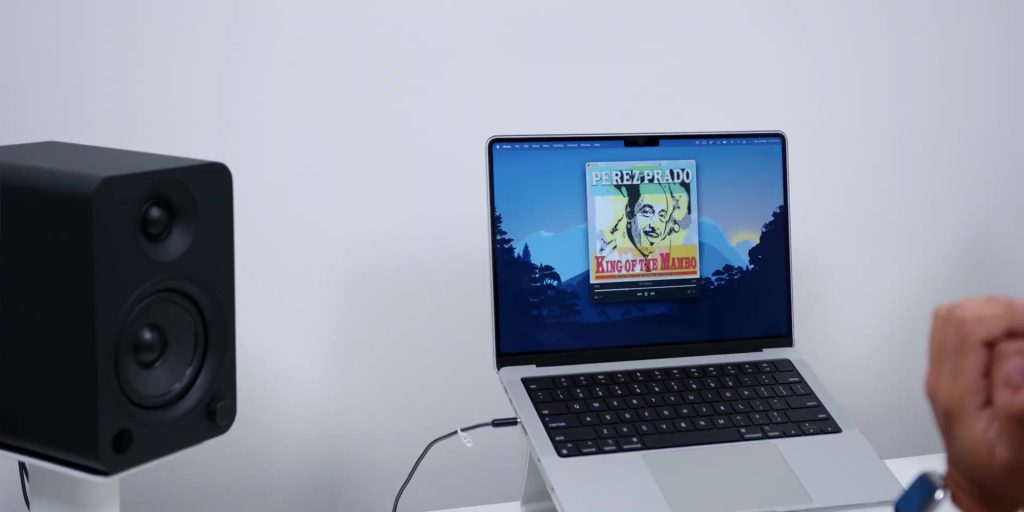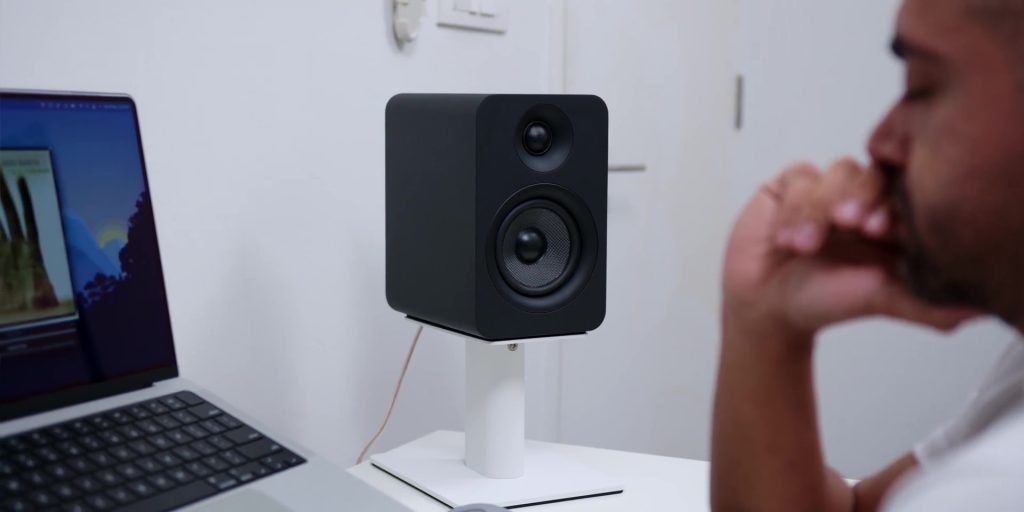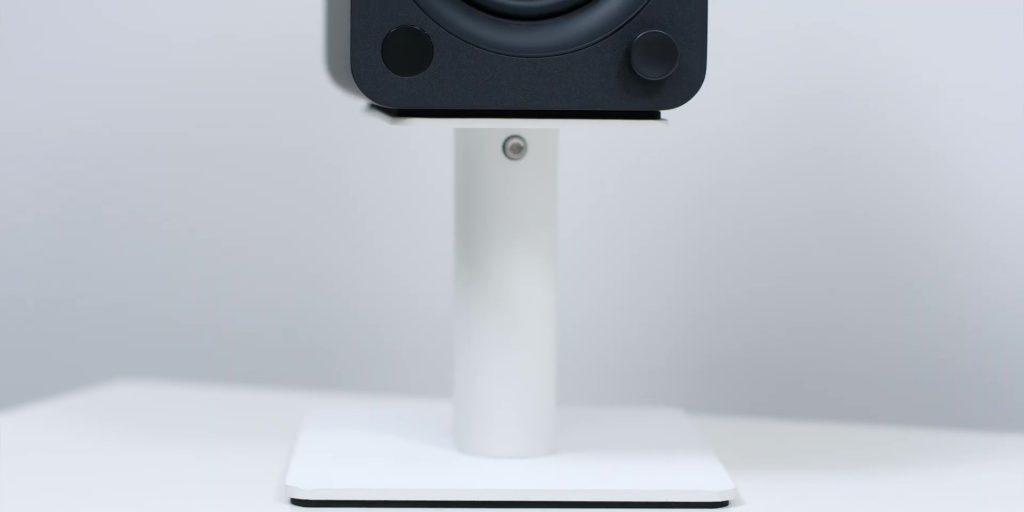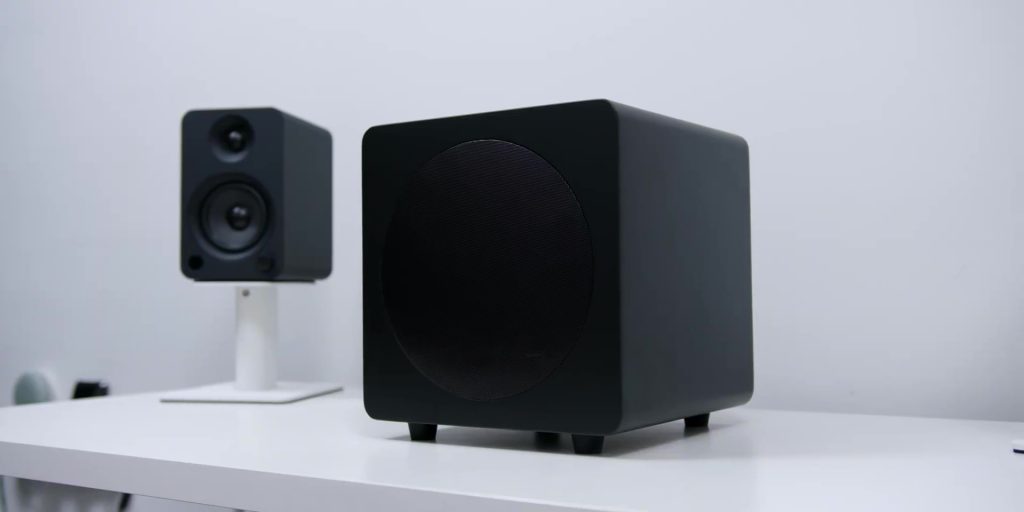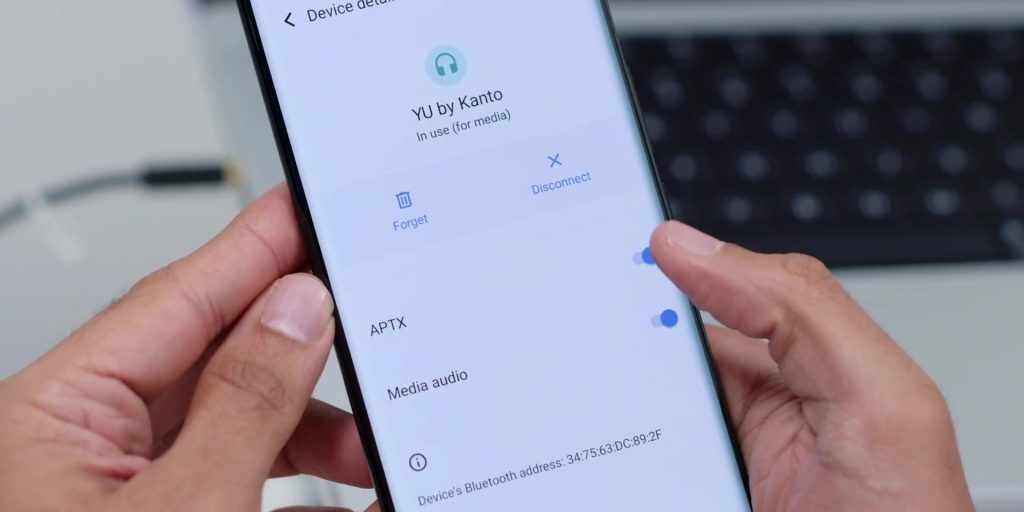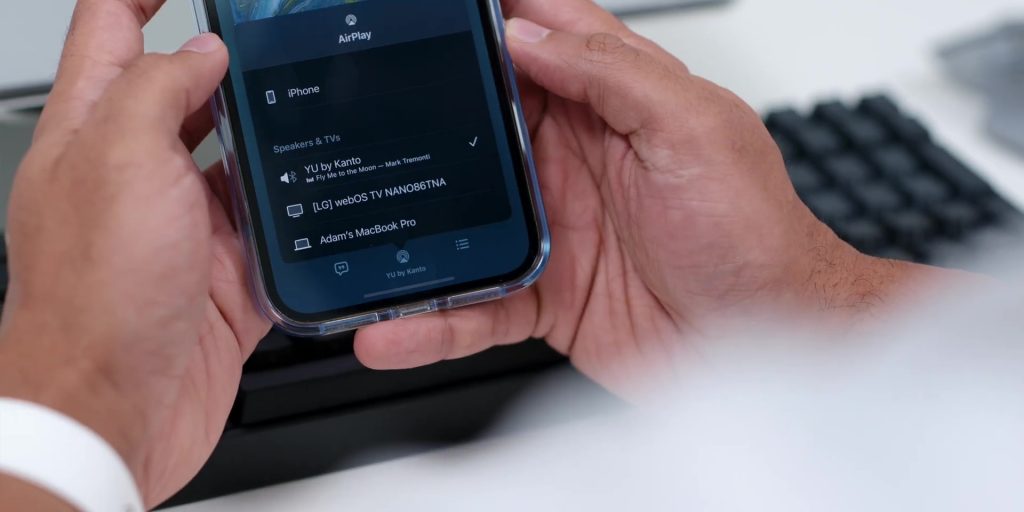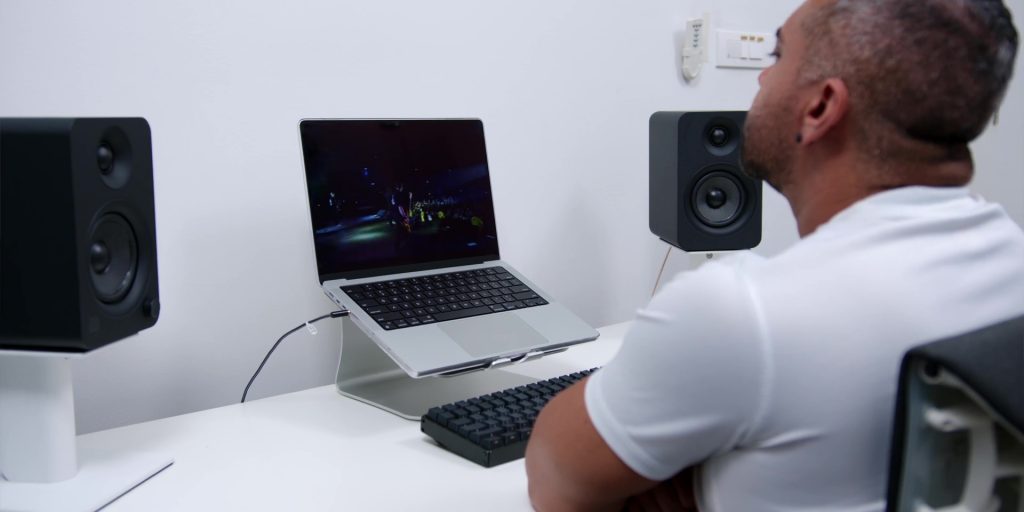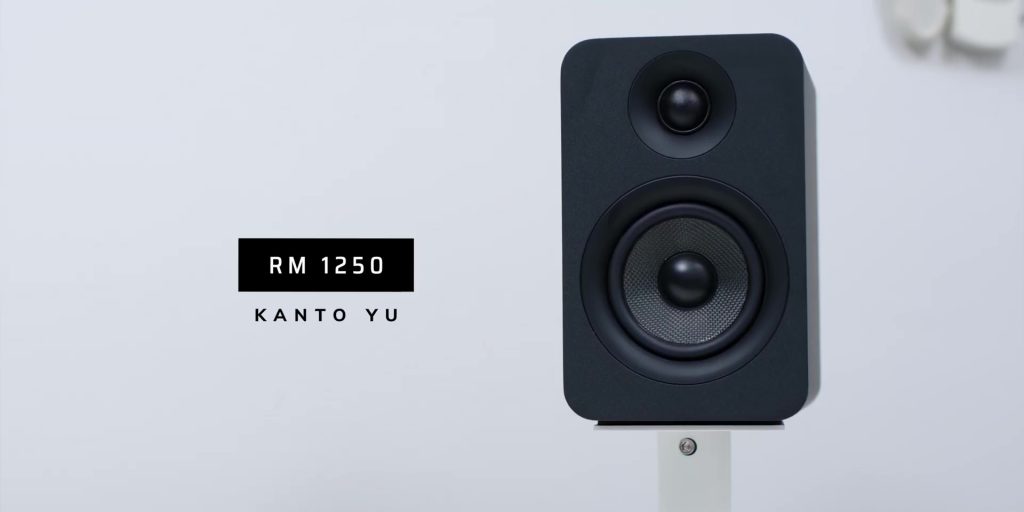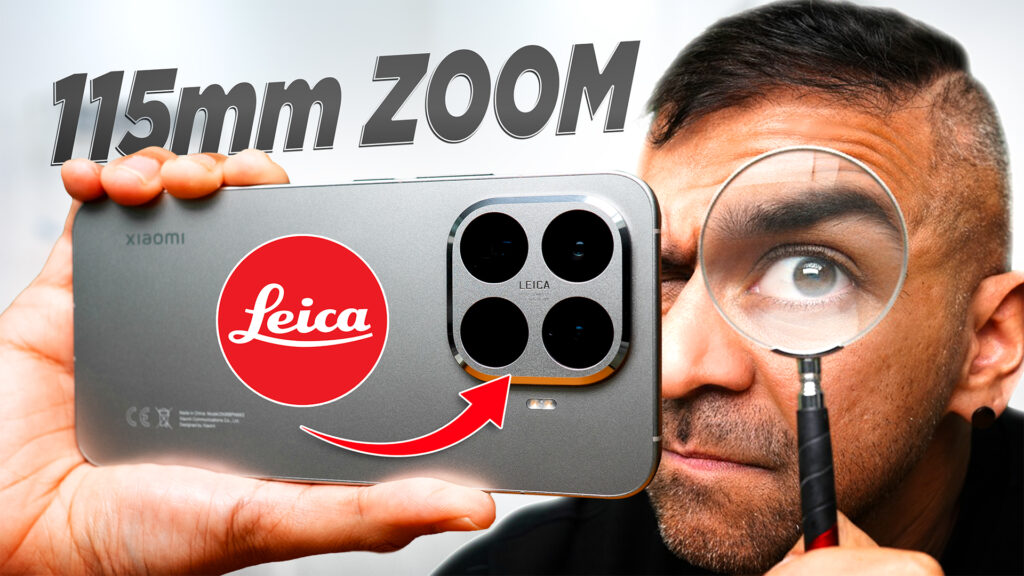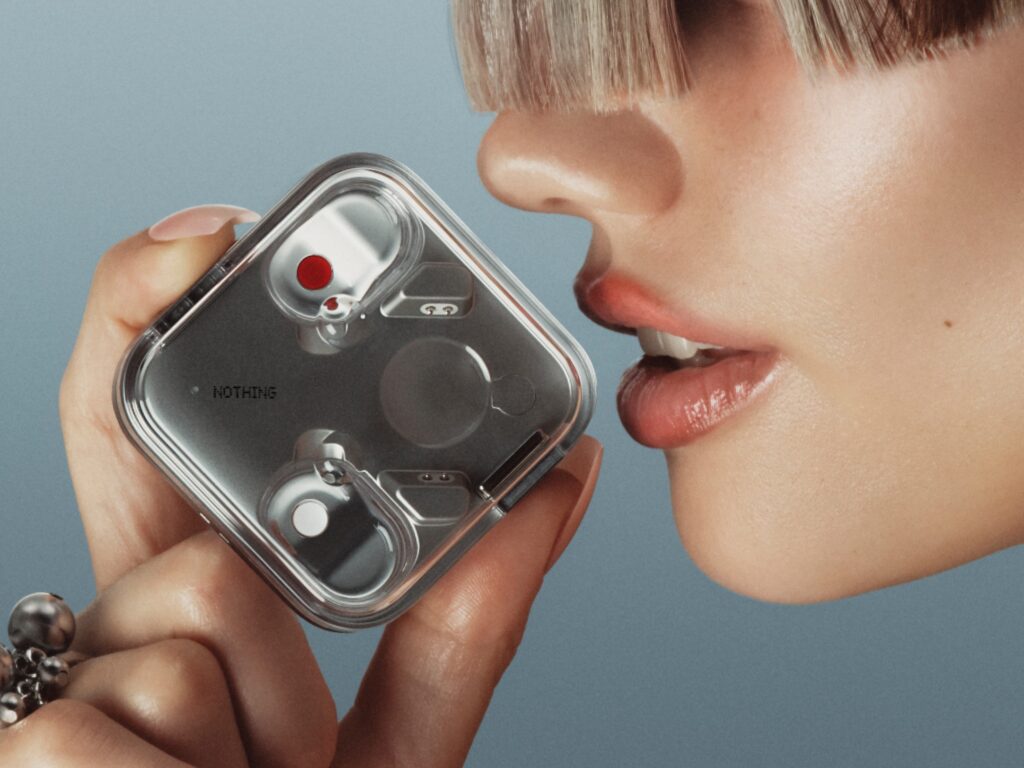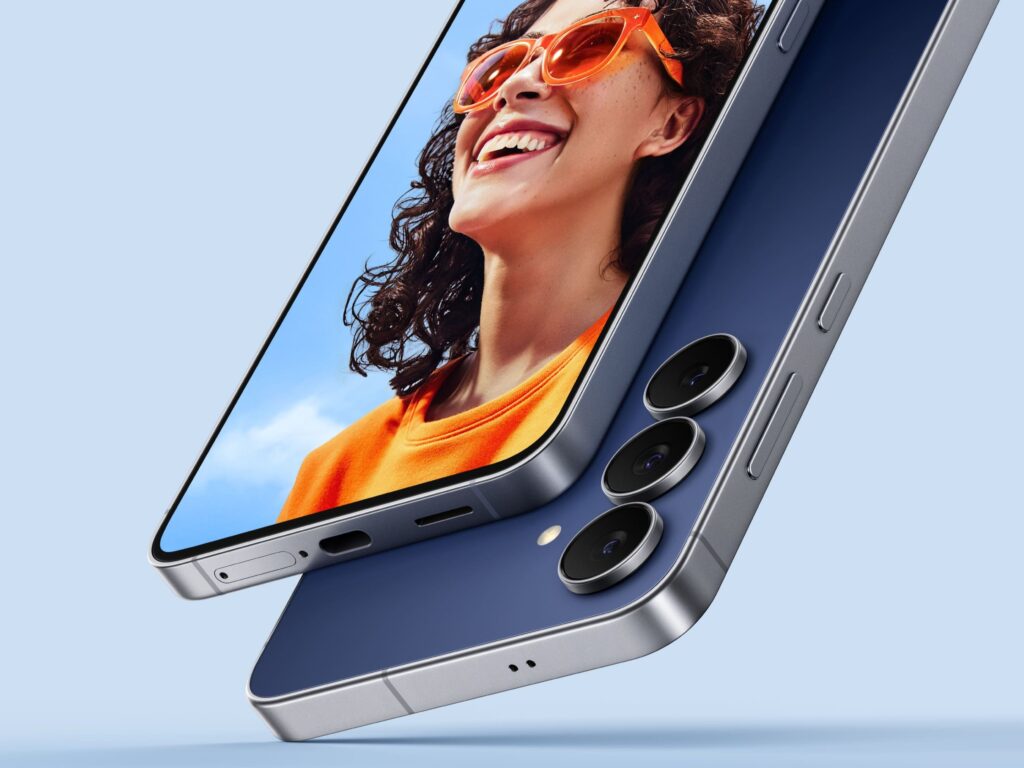Maybe you’ve been impressed with the Kanto YU2, YU4, and YU6 speakers I’ve reviewed over the past few months. Maybe you’ve been eyeing a pair but have a very tight budget. Well, here’s some good news because Kanto has a more affordable model that doesn’t sacrifice what’s most important – sound quality, so here’s the Kanto YU!
Unboxing
Similar to the other Kanto speakers, in the box, you will find the
- Remote with Batteries
- The Power Cord
- A 16 feet Speaker Wire
- 8 x Rubber Feet and the Manuals
[easy-image-collage id=8169]
Design and Build
If you’ve watched some of the Kanto speaker videos before this, you’ll know that I love the speakers’ overall contemporary, minimalist design. And well, you can expect the same aesthetics with the Kanto YU. In fact, they’re based on the Kanto YU4, sharing identical dimensions of 5.5 x 8.7 x 7.5 inches.
You’ll find the same smooth rounded edges, beautiful slightly textured finishing, and solid build quality, but it is only available in a single matte black color option. Hmm, I wished they had white at least, but this black looks kind of nice too.
The active left cabinet weighs 2.8 kilos, while the passive right cabinet is just 2.4 kilos. They’re slightly lighter than the Kanto YU4, and you’ll find out why in a bit.
Each MDF cabinet comes with a 1-inch silk dome tweeter and a high-performance 4-inch Kevlar driver. Like the other Kanto speakers, these drivers are exposed without any protective covers, so you may want to place them out of reach of kids and pets.
On the front of the active left cabinet is the familiar control knob and circular sensor housing that integrates a status LED light. The control knob is used as a source/volume/standby selector for RCA input and Bluetooth as well.
On the back, there’s the usual bass reflex port for better bass response and a basic array of connectivity options.
There’s an included remote control that gives you further controls, including tone control, power, volume, mute, and transport keys.
Overall, the Kanto YU is still very likable and will look great no matter where you put it, whether on your desk, console table, or your living room.
This time around, I finally got my hands on the Kanto SUB8; where from a design and build quality perspective, it is also very slick looking and has a minimalist rectangular box design; the dimensions are 11 x 11.9 x 11 inches, and it weighs at 7.8 kgs, which is considered pretty light for the amount of low end that the SUB8 produces.
And it comes in Matte Black or Matte White.
Hardware and connectivity
As mentioned earlier, the Kanto YU speakers are slightly lighter than their pricier YU4 sibling. And there’s a reason for this is to simply make the product more affordable; Kanto excluded a couple of features found on the YU4 like the phono preamp, as well as connectivity options like optical inputs, 3.5mm AUX input, and the USB charge port.
As you know, a phono preamp would allow you to connect to a turntable. So does this mean you can’t connect a turntable and use this Kanto YU as speakers? Not exactly. Because many turntables out there have phono preamps built-in. So you can just plug them into the RCA inputs on the back of the Kanto YU, and you’re good to go. And even if your turntable doesn’t have a built-in phono preamp, you can find lots of affordable and compact preamps on Tech X’s website as well.
The Kanto YU shares most of the good stuff, including the integrated Class D amp that kicks out 70 watts of total RMS power or 140 watts of peak power. It shares the same frequency response as the YU4, of 60 Hertz to 20 kiloHertz, plus minus 6 decibels.
As mentioned, the Kanto YU comes with an RCA input, sub out, and Bluetooth 4.2 with aptX support for wireless playback.
Then for the Kanto SUB8, it comes with an 8-inch paper cone driver, protected by a grille that’s designed for minimal diffraction. In addition, it features a Class D amplifier that outputs 125 Watts of total RMS or 250 Watts of peak power. Also, a frequency response range of 35 Hertz to 175 Hertz.
At the back, there is the Volume Level Control, the Crossover frequency adjustments, Standby power, the Phase Switch, and the Line Level Input.
Performance
I’ve been generally impressed with the Kanto-powered speaker range, and I had the exact expectations for the Kanto YU. The great news is that the Kanto YU sounds exactly the same as the Kanto YU4.
It delivers a well-balanced sound and offers a good separation of frequencies across the range. In addition, its dynamic range makes it suitable for most types of musical genres, which gives it that extra versatility.
I like that the soundstage is pretty wide and will easily fill a room or small studio. When placed optimally, they will give you a nice, proper stereo image and an excellent centered definition.
For this particular setup, I went with the Kanto SP6 Desktop Stands for that optimum listening position.
Sound signature-wise, the Kanto YU is consistent with its other siblings. It’s neutral and balanced, and the mid-range is well-saturated with a tendency to be on the warm side. The top end is nice and smooth with minimal distortion.
The YU generally handles low frequencies quite well with clarity. However, if you’re a bass lover, then I’d recommend you add this superb Kanto SUB8 for that added boom-boom. And I must say the SUB8 really delivers that low-end punch. Bassy tracks sound full without distortion. Definitely a great companion to the Kanto YU, or any Kanto YU series speakers for that matter.
And for a quick playlist of songs that I tested the speakers with, I will be putting them the below for you to get an idea of my sound quality review, which was based on.
Billie Eilish – Bad Guy
Audioslave – Show Me How To Live
Disturbed – Open Your Eyes
Rosemary Clooney, Pérez Prado – Sway (Quien Sera)
A.R. Rahaman, Matt Dunkley & Czech Film Orchestra and Chorus – Dacoit Duel
Yosi Horikawa – Timbres
Now while it is still not the best way to gauge a speaker’s sound, but still, do check out my sound test for the Kanto YU with the SUB8 in my YouTube video.
Bluetooth connectivity works flawlessly, and to connect your Android or iOS devices, it’s a pretty straightforward process. In addition, aptX delivers high-res streaming from your Android devices, while the Apple Lossless format on Apple devices provides similar performance as well.
Conclusion
So, in conclusion, The Kanto YU is a no-frills, wireless-capable powered desktop speaker system that’s affordable, looks good, and delivers excellent sonic quality at a very competitive price.
I’m glad that while it does lack certain features, such as a phono preamp and a USB input, it doesn’t compromise on audio quality, which is what I love most about them.
And I feel that the Kanto YU will dramatically improve your computer audio system or audio on your TV without breaking the bank.
I know I said previously that the YU6 gave the best value-performance of the Kanto family, but I think with the Kanto YU, you get the best bang-for-buck for under RM1,300 as the Kanto YU retails at only RM1,250 and can be purchased from our friends at TechX Malaysia and The SUB8 subwoofer costs RM1,550.
But hey, what do you think? YU2? YU4? YU6 or just this plain YU?
Get the Kanto YU and SUB8 at the link below:-
Kanto YU speaker – https://www.techx.com.my/products/kanto-yu-powered-active-speakers-malaysia
Kanto SUB8 Subwoofer – https://www.techx.com.my/products/best-compact-powered-subwoofer-kanto-sub8
TechX’s Official Website – https://www.techx.com.my/
Relevant products mentioned in the video:
Kanto YU2 – https://www.techx.com.my/products/kanto-yu2-powered-computer-speakers-malaysia
Kanto YU4 – https://www.techx.com.my/products/kanto-yu4-built-in-phono-preamp-active-wireless-speakers
Kanto YU6 – https://www.techx.com.my/products/kanto-yu6-best-wireless-turntable-speakers-malaysia
Kanto SP6 Desktop Speaker Stands – https://www.techx.com.my/products/best-hifi-powered-speakers-hivi-d200-1-1-1

